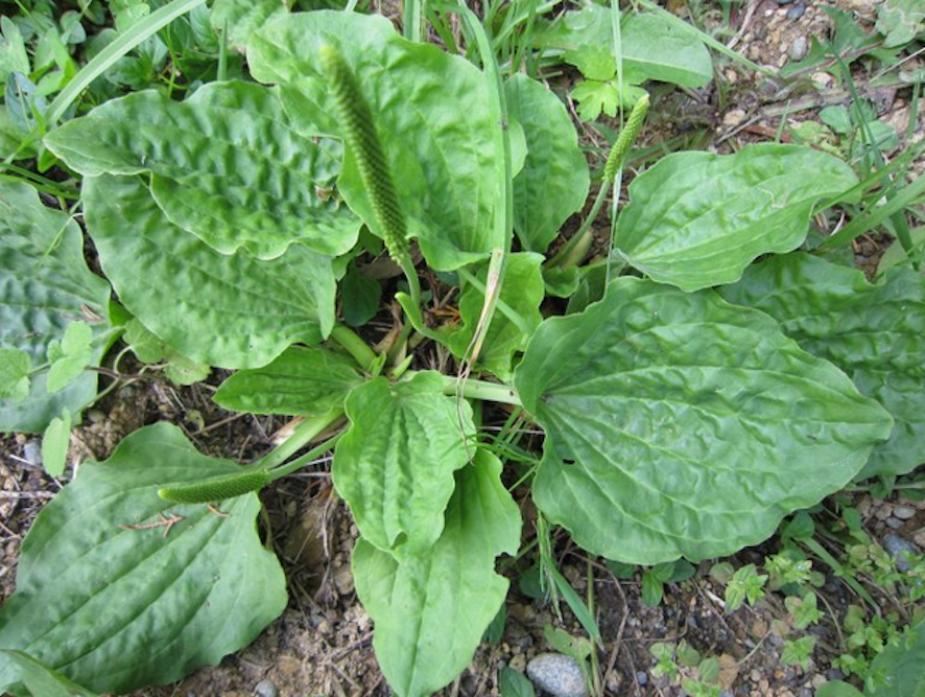
Great Plantain Plantago major
PLANTAINS are so common in meadows, farmyards, along paths and even among town pavements that we tend to ignore them.
Yet they are of great significance, both as a valuable pasture component for silage and hay, and as one of the nine sacred plants of the herbalists, for their medicinal value.
And who doesn’t, as a child, remember picking off the shoot of the related ribwort plantain to wrap the stem around the compact flowering tip and fire it off in a game called Soldiers, or using them as a variant of conkers.
The great plantain, shown here, has strong leathery leaves which even survive trampling.
Here again, children would carefully pull the leaves apart to reveal the transparent fibres holding the halves together. The aim was to see how far apart the halves could be drawn without breaking the strands. Children referred to them as “Angels’ Harps”.
When the first settlers went to America, they took these plants with them, either for their medicinal qualities or simply by chance on their muddy boots.
Native Americans called the great plantain “white-man’s footprints”, as they also did with pineapple-weed, which always seemed to grow wherever settlers trod.
This accounts for one of the plant’s ancient names of “waybread”.
Although the leathery leaves can be eaten, a reference from 1657 says that the nickname refers to the manner in which the plants “breed along the way”.
Plantain flowers are minute tubes and you would need a lens to see them.
The tubes are enclosed by yellow pointed sepals, but it is the anthers which are prominent.
They stick out from the inflorescence starting from the top and gradually opening up down the length of the spike.
The anthers are purple when young, but age into a dirty yellow and the vast quantity of pollen they produce ensures that pollination by wind can occur. The many seeds held by this flowering stem are small, hard lozenges which can become mucilaginous when wet and the ripe inflorescences are known as “rat’s tails”.
The plant extracts do have astringent qualities. Claims for its therapeutic values are so many that for herbalists it would qualify as a broad-spectrum remedy, not only curtailing bleeding but also relieving burns and scalds, curtailing heavy periods, and helping with myriad problems, including snake bites, sores, ringworm and malaria, and “helping lunatic and phrenetic persons very much”.
Still, probably best to go up to the surgery.
Dr Richard Warren is a botanist living in Barnard Castle





